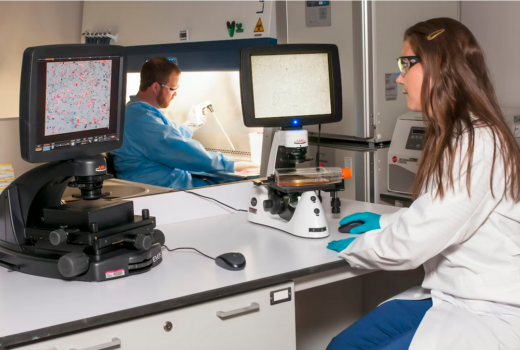Aarde op 20 lichtjaren

The discovery caps an 11-year effort to tease out informationfrom instruments on ground-based telescopes that measure minutevariations in starlight caused by the gravitational tugs oforbiting planets.
Planet G — the sixth member in Gliese 581’s family — orbitsright in the middle of that system’s habitable region, wheretemperatures would be suitable for liquid water to pool on theplanet’s surface.
“This is really the first ‘Goldilocks’ planet, the first planetthat is roughly the right size and just at the right distance tohave liquid water on the surface,” astronomer Paul Butler, with theCarnegie Institution in Washington, D.C., told reporters during aconference call Wednesday.
“Everything we know about life is that it absolutely requiresliquid water,” he added. “The planet has to be the right distancefrom the star so it’s not too hot, not too cold… and thenit has to have surface gravity so that it can hold on to asubstantial atmosphere and allow the water to pool.”
With a mass three times larger than Earth’s, the newlydiscovered world has the muscle to hold atmosphere. Plus, it hasthe gift of time. Not only is its parent star especiallylong-lived, the planet is tidally locked to its sun — similar tohow the moon keeps the same side pointed at Earth — so that halfthe world is in perpetual light and the other half in permanentdarkness. As a result, temperatures are extremely stable anddiverse.
“This planet doesn’t have days and nights. Wherever you are onthis planet, the sun is in the same position all the time. You havevery stable zones where the ecosystem stays the same temperature…basically forever,” Vogt said. “If life can evolve, it’s going tohave billions and billions of years to adapt to the surface.”
“Given the ubiquity of water, it seems probable that this thingactually has liquid water. On the surface of the Earth, everywhereyou have liquid water you have life,” Vogt added. The questionwouldn’t be to defend that there is life at Gliese 581g, saysButler. “The question,” he said, “would be to demonstrate thatthere isn’t.”
Current technologies won’t allow scientists to study theplanet’s atmosphere for chemical signs of life, but astronomersexpect many more similar life-friendly planets to be discoveredsoon. If one or more of those cross the face of their parent star,relative to our line of sight, then it’s possible to gatheratmospheric data.
“This system is not in an orientation such that this planetwould ever transit, so unfortunately this is not a case wherenature has thrown us a bone,” Vogt noted. “That being said, it isso close and we have found this thing so soon that it suggests wewill start finding a lot of these things in the future andeventually we will find systems that do transit. This is aharbinger of things to come.”
The research appears in this week’s issue of AstrophysicalJournal
[bron: Discovery News]
Meest Gelezen
Vrouwen houden universiteit draaiende, maar krijgen daarvoor geen waardering
Wederom intimidatie van journalisten door universiteit, nu in Delft
Hbo-docent wil wel rolmodel zijn, maar niet eigen moreel kompas opdringen
‘Burgerschapsonderwijs moet ook verplicht worden in hbo en wo’
Raad van State: laat taaltoets nog niet gelden voor hbo-opleidingen



